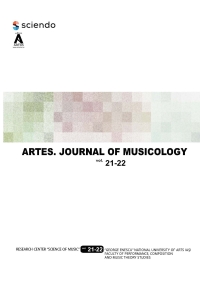Valentin Timaru – The Concerto for Violin and Orchestra. The Ratio of Combining Formal Principles within the Genre
DOI:
https://doi.org/10.35218/Keywords:
Romanian composers, music genre, musical form, analysisAbstract
The Concerto for Violin and Orchestra (1976) uses aesthetic and stylistic features often found in Valentin Timaru’s compositions: the Romanian musical-folkloric expression, the modal-diatonic and the modal-chromatic language, the free chromaticism, the improvisational nature, the musical articulations with generative purpose, the cyclic thinking and structuring, the preoccupation with the musical form, the proportion and the alternance of the forms used within the genre, as well as the juxtaposition of different formal principles in one part. The four constitutive movements (Lamento, Melopoeia, Variations, and Epilogue) are connected through the thematic interdependence (parts I and IV), the abandonment of the classical formal structure (the sonata form) and the attacca connections
Downloads
Published
Issue
Section
License
Copyright (c) 2023 ARTES. JOURNAL OF MUSICOLOGY

This work is licensed under a Creative Commons Attribution-NonCommercial 4.0 International License.

